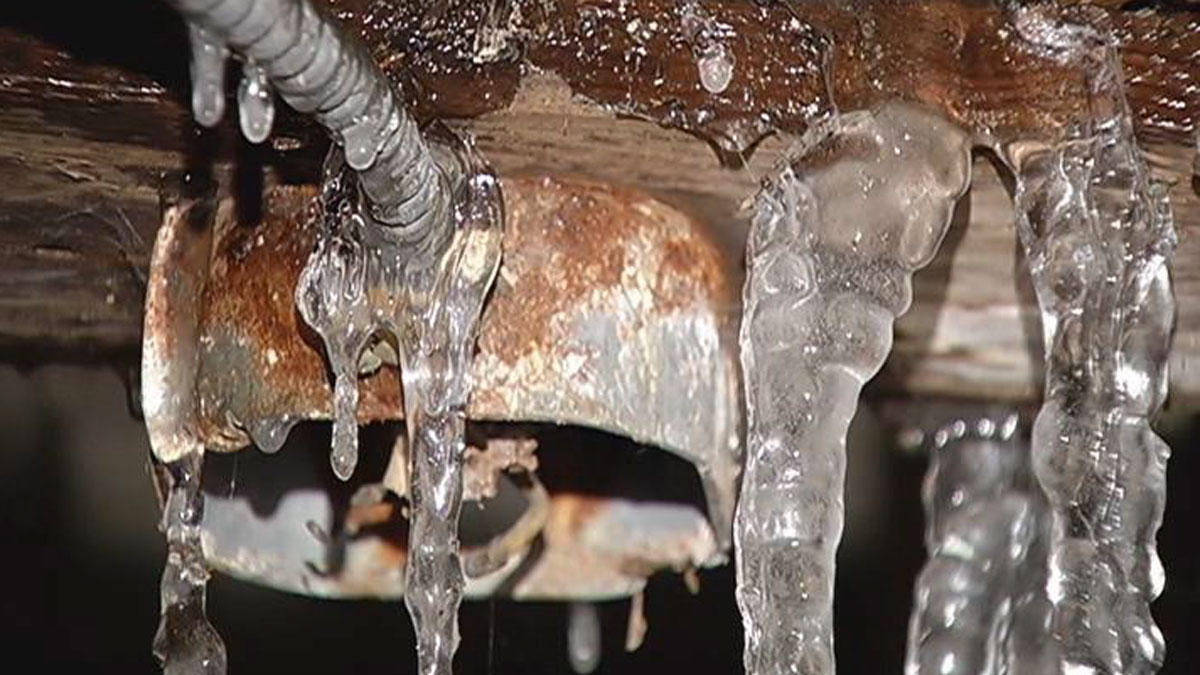Protecting Against Frozen Pipes: Effective Strategies for Winter
Protecting Against Frozen Pipes: Effective Strategies for Winter
Blog Article
Have you been in search of advise on Winter Plumbing Precautions: Preventing Frozen Pipes?

Winter can ruin your pipes, particularly by freezing pipelines. Below's just how to avoid it from occurring and what to do if it does.
Introduction
As temperatures decline, the threat of frozen pipes rises, possibly resulting in expensive repair work and water damages. Comprehending just how to stop frozen pipes is essential for property owners in cold climates.
Understanding Icy Pipes
What causes pipes to ice up?
Pipelines ice up when subjected to temperature levels listed below 32 ° F (0 ° C) for expanded periods. As water inside the pipes ices up, it broadens, taxing the pipeline wall surfaces and possibly causing them to burst.
Risks and damages
Icy pipelines can lead to supply of water interruptions, residential property damage, and expensive repair services. Ruptured pipes can flood homes and create substantial structural damages.
Indications of Frozen Pipeline
Identifying icy pipes early can stop them from rupturing.
Exactly how to determine frozen pipes
Seek lowered water circulation from taps, uncommon smells or sounds from pipes, and visible frost on revealed pipelines.
Avoidance Tips
Shielding susceptible pipes
Wrap pipes in insulation sleeves or use warmth tape to shield them from freezing temperature levels. Focus on pipes in unheated or external areas of the home.
Heating strategies
Maintain interior rooms adequately warmed, particularly locations with plumbing. Open up cupboard doors to allow warm air to distribute around pipelines under sinks.
Protecting Outside Pipes
Garden hoses and outside taps
Detach and drain pipes garden hoses before winter. Mount frost-proof faucets or cover outside faucets with insulated caps.
What to Do If Your Pipes Freeze
Immediate activities to take
If you presume frozen pipelines, keep taps open up to eliminate pressure as the ice melts. Make use of a hairdryer or towels soaked in warm water to thaw pipelines gradually.
Long-Term Solutions
Structural changes
Think about rerouting pipes far from exterior wall surfaces or unheated locations. Add additional insulation to attic rooms, basements, and crawl spaces.
Updating insulation
Invest in top notch insulation for pipes, attics, and wall surfaces. Proper insulation assists maintain constant temperature levels and decreases the threat of icy pipes.
Final thought
Avoiding frozen pipelines calls for proactive actions and fast reactions. By understanding the reasons, indications, and safety nets, house owners can protect their pipes throughout cold weather.
5 Ways to Prevent Frozen Pipes
Drain Outdoor Faucets and Disconnect Hoses
First, close the shut-off valve that controls the flow of water in the pipe to your outdoor faucet. Then, head outside to disconnect and drain your hose and open the outdoor faucet to allow the water to completely drain out of the line. Turn off the faucet when done. Finally, head back to the shut-off valve and drain the remaining water inside the pipe into a bucket or container. Additionally, if you have a home irrigation system, you should consider hiring an expert to clear the system of water each year.
Insulate Pipes
One of the best and most cost-effective methods for preventing frozen water pipes is to wrap your pipes with insulation. This is especially important for areas in your home that aren’t exposed to heat, such as an attic. We suggest using foam sleeves, which can typically be found at your local hardware store.
Keep Heat Running at 65
Your pipes are located inside your walls, and the temperature there is much colder than the rest of the house. To prevent your pipes from freezing, The Insurance Information Institute suggests that you keep your home heated to at least 65 degrees, even when traveling. You may want to invest in smart devices that can keep an eye on the temperature in your home while you’re away.
Leave Water Dripping
Moving water — even a small trickle — can prevent ice from forming inside your pipes. When freezing temps are imminent, start a drip of water from all faucets that serve exposed pipes. Leaving a few faucets running will also help relieve pressure inside the pipes and help prevent a rupture if the water inside freezes.
Open Cupboard Doors
Warm your kitchen and bathroom pipes by opening cupboards and vanities. You should also leave your interior doors ajar to help warm air circulate evenly throughout your home.

As an enthusiastic reader about How to prepare your home plumbing for winter weather, I think sharing that excerpt was really helpful. Enjoyed reading our article? Please share it. Let another person discover it. I am grateful for being here. Revisit us soon.
Course Detail Report this page